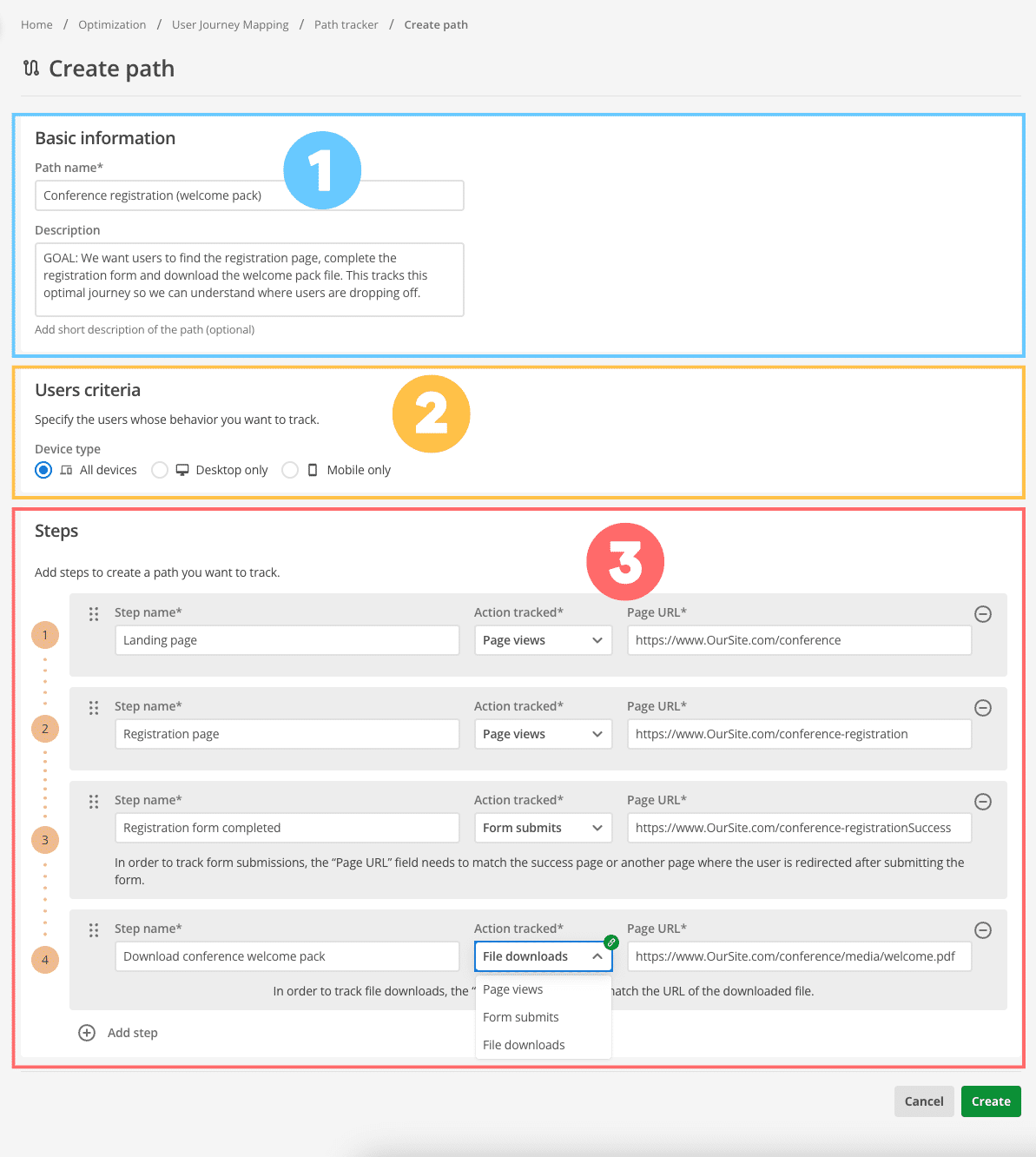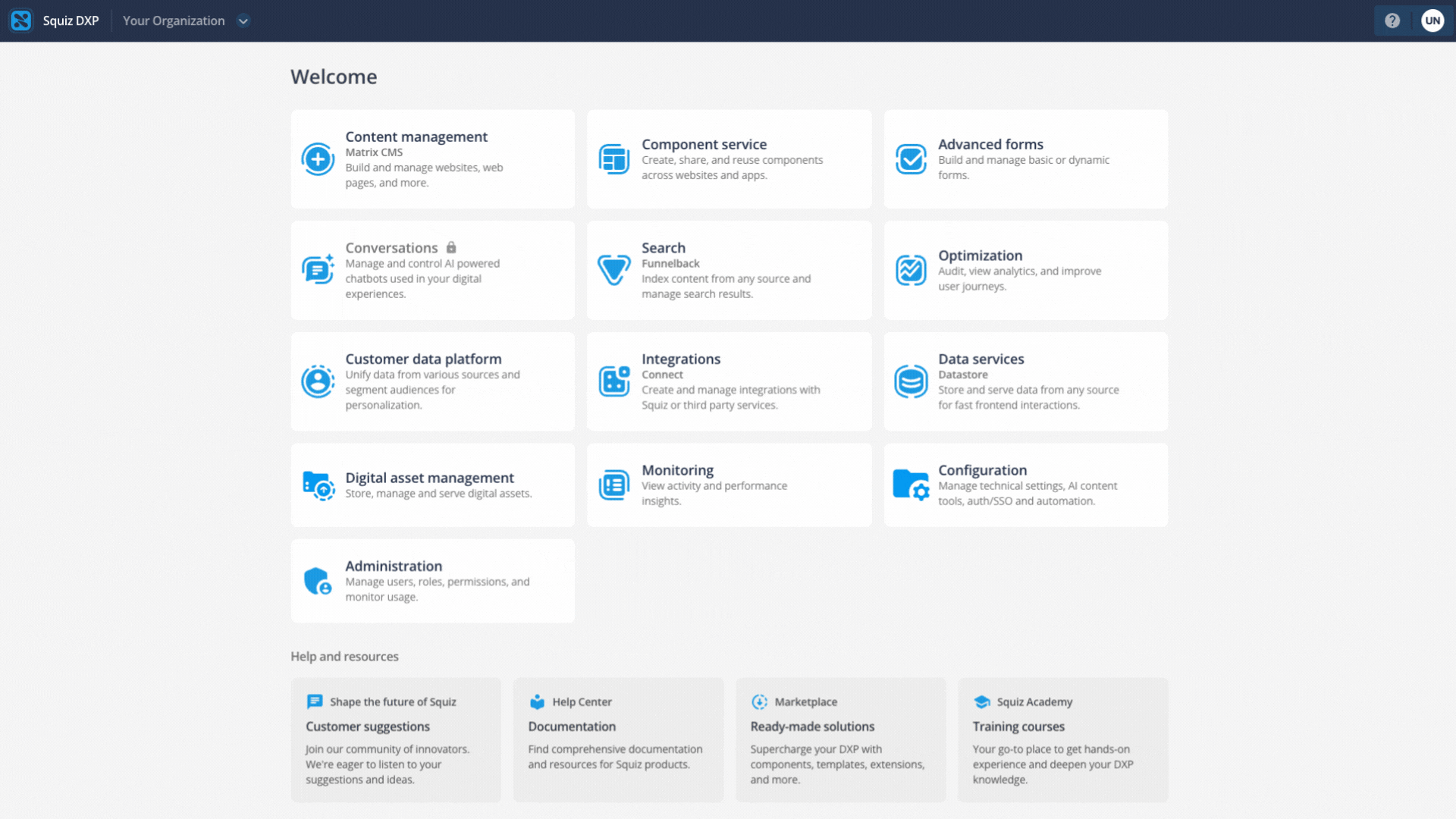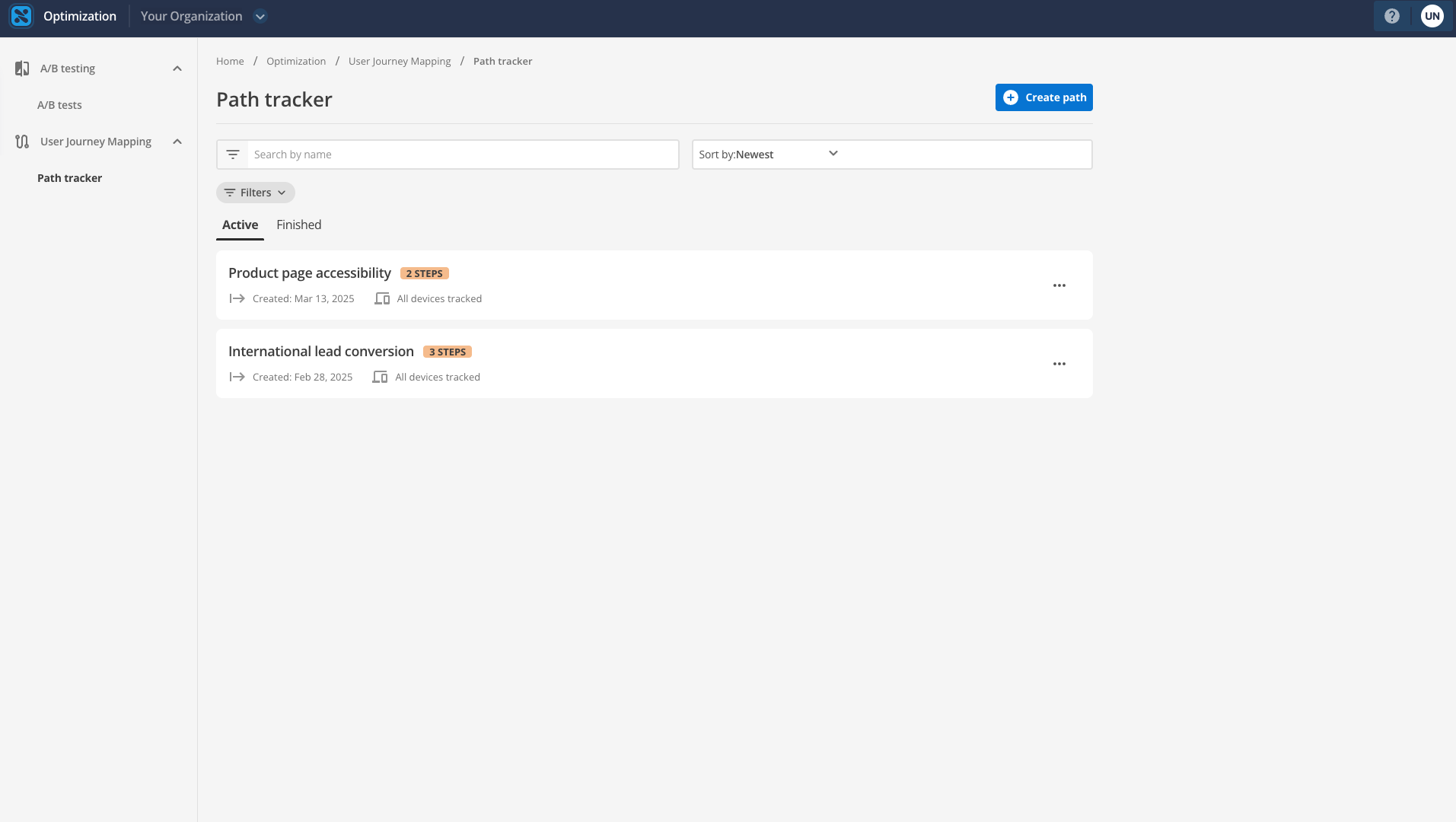How to use the service
The following is an overview of how the Squiz DXP UJM implementation is designed to function.
-
First, identify your user segments.
-
Which users are taking this journey?
To accurately understand your users' needs, you need to understand the broad demographics to which they belong.
-
-
Then Define a goal.
-
What is a user’s expected journey path?
Configure the individual steps of the path (such as the user viewing a specific page or filling out a form).
-
A journey is between two (2) and fifteen (15) steps.
-
After a path is active, it starts collecting data and updates every hour.
You can view results while the path is active or after you have manually stopped it.
-
Review the results and make some data-driven decisions to optimize the user’s journey.
-
If necessary, you can take any insights obtained in previous UJM processes and set up a new process to measure any changes.
Define a goal
A goal for a User Journey Mapping path is the specific action that signifies the completion or desired outcome of the user’s journey you want to track.
These actions can be:
-
Page views: the user views a specific page.
-
Form submits: The user reaches a success page after submitting a form.
Success page, here, is the URL returned to the user after filling in and submitting a form.
Depending on how the form is set up, this may not be the URL of the page hosting the form.
See Custom form contents: advanced settings for how to use Matrix to set this URL.
See Confirmation for how to use Advanced Forms to configure either a formal confirmation page or simply a post–form-submission page.
Setting a goal for the path is essential: it provides a clear endpoint to the user journey you are analyzing.
You cannot effectively measure the journey’s success without a defined goal.
Setting clear goals can help you in the following ways:
- Build better paths
-
Do you have a clear sense of a user’s ideal journey? When creating a path, setting a goal helps plan the steps.
- Measure success
-
With a clear goal set, you can measure how the user journey supports specific business objectives.
- Best practice path administration
-
Set the goal as the path’s description field.
The path description is an optional but highly recommended field.
Setting the field to the goal clarifies its purpose for teammates and your future self.
Creating paths
When creating a path, fields and options in three main sections must be configured:

Basic information
This section includes
- Path Name (required)
-
Standardized naming conventions help keep things organized and clear.
This is especially the case if multiple people create and manage paths.
- Description (optional)
-
Describe the purpose of the path.
This is highly recommended.
It is also best practice to set this field to the path goal.
Users criteria
- Device type
-
By default, the path tracks a users' journeys no matter their device (All devices).
Select a specific device type to track Desktop or Mobile users only.
Steps
Configure the user journey steps.
A path must have at least two steps and can have no more than 15 steps.
The following information is required for each step in the path:
- Step name
-
A short, descriptive name for the step to help in analysis.
- Action tracked
-
- Page views
-
The user views a specific page.
- Form submits
-
The user reaches a success page after submitting a form.
Success page, here, is the URL returned to the user after filling in and submitting a form.
Depending on how the form is set up, this may not be the URL of the page hosting the form.
See Custom form contents: advanced settings for how to use Matrix to set this URL.
See Confirmation for how to use Advanced Forms to configure either a formal confirmation page or simply a post–form-submission page.
- URL
-
The specific URL associated with this step in the user journey.
Ensure the URL is accessible to your audience (that is, ensure it is published).
As well, User Journey Mapping is designed to track how users navigate within your Squiz DXP site: it cannot track actions that occur externally to your site.
Effective journey planning considerations
- Align the goal with a clear business objective
-
For example, if increasing course applications is the objective, set the path’s goal to Form submits.
- Define the final step of the desired journey as the goal
-
See how many users successfully navigate the preceding steps to reach the intended endpoint.
- Ensure the goal is a tangible action that can be tracked in UJM
-
Trackable actions are things like page views and form submissions.
For form submissions, a dedicated success page is required for tracking this type of goal.
- Consider the different types of user interactions you want to analyze
-
The available actions allow you to track different forms of engagement and conversion.
For example, you might track completed form submissions or a page view for important informational pages.
- Keep the journey focused
-
While a path can have up to 15 steps, ensure the goal is directly relevant to the specific sequence of steps you track.

